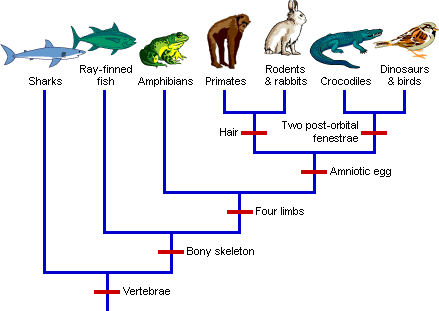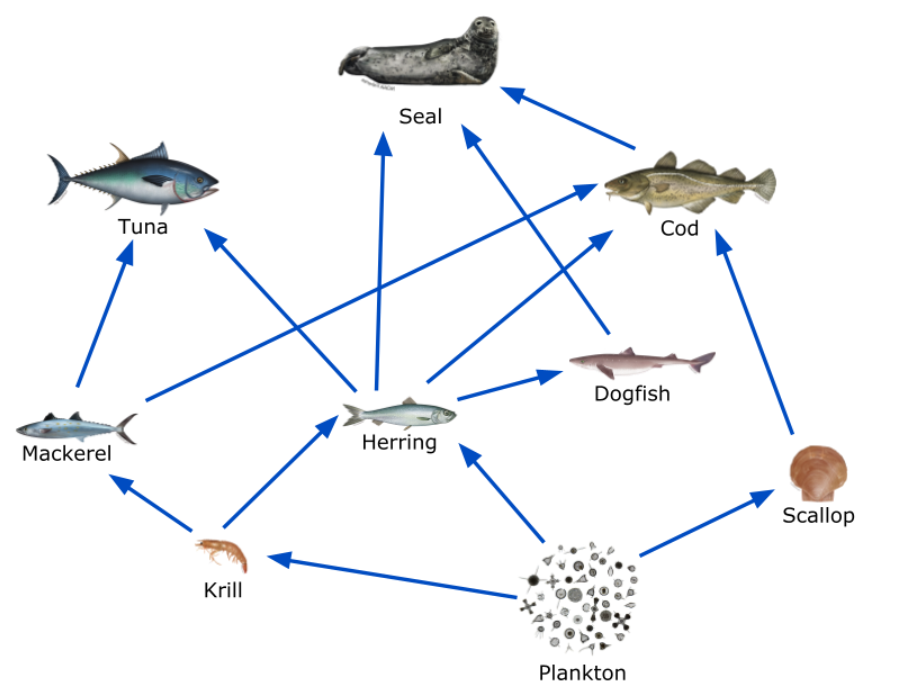The characteristic(s) shared by the primates, rodents and rabbits, crocodiles and dinosaurs and birds

Amniotic Egg
The importance of having a scientific name
to avoid confusion
List the 5 relationships between organisms
Mutualism
Commensalism
Parasitism
Predation
Competition
The male structures of the plant are _____
Anther and Filament
STEAL OPPORTUNITY: WHAT IS THE FUNCTION OF EACH ONE?
The 1st trophic level receives 678,000 joules of energy. Therefore, the 4th trophic level receives _____ joules.
678 joules
A new rabbit predator that runs faster than native predators has been introduced to an ecosystem.
Part 1: What will occur in the rabbit population because of this new fast predator?
Part 2: This is an example of an a_________.
Part 1: Faster rabbits will survive and reproduce increasing the average speed of the rabbit population.
Part 2: Adaptation
Define a community
A community has 2 or more species
What is mutualism?
Give an example
both organisms benefit each other
example:_____
Pollinator attractors are___
Pollen is deposited on the_____
Pollen travels and fertilizes egg in the_____
Petals
Stigma
Ovule
Which trophic level of the energy Pyramid receives the most energy?
1st trophic level
STEAL OPPORTUNITY: WHO DO THEY RECIEVE IT FROM?
Coral-like sea organisms called bryozoans appeared 140 million years ago. They remained UNCHANGED for the first 40 million years and SUDDENLY experienced RAPID genetic change.
The evolutionary pattern experienced by the bryozoans is
A)Convergent evolution B)Differentiation C)Punctuated Equilibrium D)Gradualism
C) Punctuated Equilibrium
The characteristics of belonging to the Phylum Cnidaria are.....

no backbone
cannot fly
changes locations on its own
has no fur
Green Algae grown on the backs of spider crabs living in shallow water, camouflaging the spider crabs while the crabs protect the algae from predators.
The relationship is _________.
Mutualism
Bare rock-> mosses-> small shrubs-> small trees
The succession here is_____
Primary Succession
Identify the group(s) of secondary consumers. (3rd trophic level)
Crustaceans and Reptiles
Most animals avoid eating monarch butterflies due to their bad taste. Viceroy butterflies look very similar to the monarchs. This benefits the butterfly because....
Viceroy butterflies are able to deter predators in the same way.
The level of taxonomy that suggest the closest relationship between 2 organisms
GENUS
The body systems that work in breathing
Circulatory
Muscular
Nervous
Respiratory
The vascular tissues of plants are _ and _
The _ carries _ from the _ to the _ AND the _ carries _ from _ to _ and back.
Xylem and Phloem
Xylem, water, roots, shoots
Phloem, food, shoots, roots
The organisms that are direct energy for tertiary consumers are _ ?
Mackerel, Herring, Dog Fish, and Cod
Cross pollination of flowers from different populations of the same species will most likely result in...
A) Gene flow as new alleles are introduced
B) Evolution of different species as alleles mix
C) Hybrid sterility as gametes from different individuals are incompatible
D)a decrease of genetic variation among individuals
A
List the levels of taxonomy in order from broadest to more specific.
Domain, Kingdom, Phylum, Class, Order, Family, Genus, Species
The body systems that work together for nutrient absorption
Digestive
Circulatory
muscular
skeletal
Explain the difference between primary and secondary succession
Primary succession begins with nothing but rock and secondary succession begins after a disruption occurs leaving behind soil and seeds.
